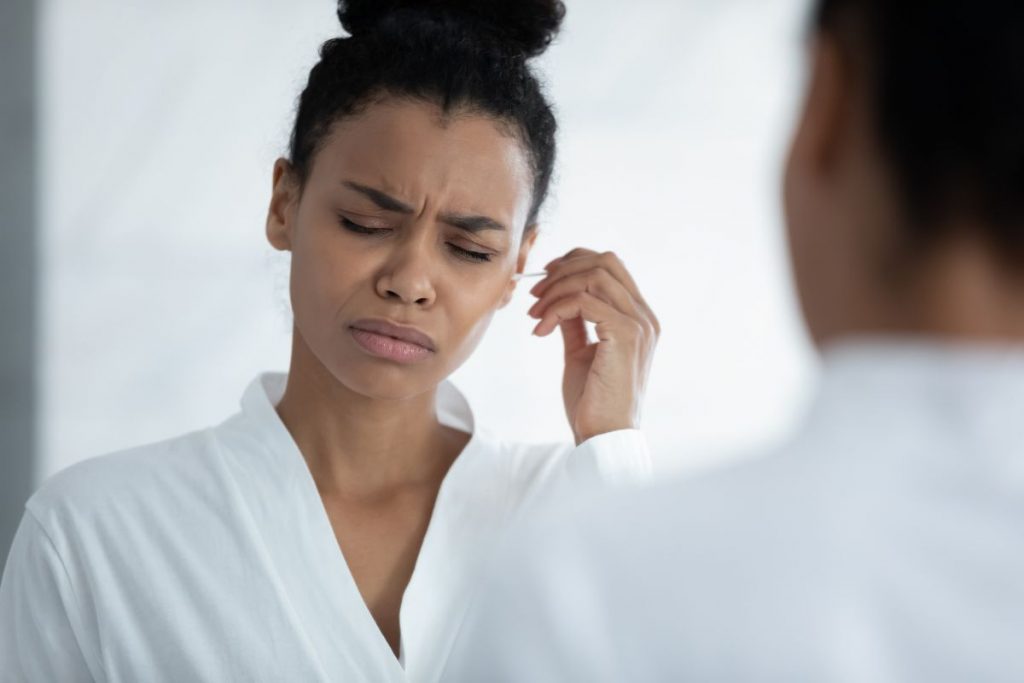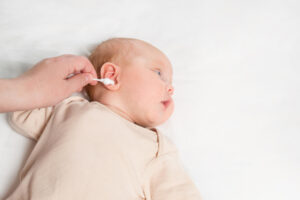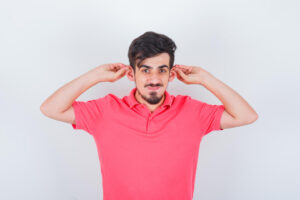Introduction - Understanding earwax and its purpose

In this article, Dr Shree Rao talks about the do’s and don’ts of earwax removals. She is the Best Doctor for Cochlear Implants.
Earwax, scientifically termed cerumen, is an often underestimated yet vital element within the auditory system. Derived from specialized glands within the ear canal, this seemingly unremarkable substance holds multifaceted roles that contribute profoundly to ear health. Rather than a mere collection of debris, earwax is a meticulously concocted blend of glandular secretions and discarded skin cells. Its adhesive texture is purposefully designed to shield the ear from external elements, moisture, and foreign particles that might compromise hearing or induce discomfort.
Primarily, earwax acts as a natural shield, creating a barrier against environmental factors. Its sticky consistency captures dust, debris, and microscopic intruders, preventing them from reaching sensitive inner ear structures. This protection proves particularly crucial in environments rife with allergens, pollutants, and potential pathogens.
Moreover, earwax plays a pivotal role in maintaining a balanced moisture environment within the ear canal. By forming a protective layer, it prevents excessive moisture loss from the ear canal’s skin lining, averting dryness and potential irritation that could lead to discomfort and minor injuries.
Drawing from her expertise, Dr. Rao offers professional guidance on proper ear hygiene practices that support the body’s natural earwax management. With her knowledge and patient-centered approach, she ensures that individuals attain a harmonious equilibrium for ear health.
Differentiating between normal earwax and impacted earwax
Earwax, or cerumen, is a guardian within the auditory system, blocking foreign invaders through its adhesive nature. However, impacted earwax, caused by accumulation, brings discomfort like reduced hearing and dizziness. Addressing it cautiously is vital—improper attempts can worsen the blockage.
Differentiating between normal earwax and impacted earwax involves considering several key features:
- Texture and color – Normal earwax is typically soft, with a light to dark yellow coloration. Impacted earwax, in contrast, can become harder and darker in color due to prolonged accumulation.
- Symptoms – Normal earwax generally does not cause discomfort or interfere with hearing. Impacted earwax, on the other hand, may lead to symptoms such as reduced hearing, earache, or a sensation of fullness in the ear.
- Appearance – An ENT specialist can visually assess the ear canal and identify signs of impacted earwax through medical instruments.
- Medical assessment – If there are suspicions of impacted earwax, seeking professional medical assessment is prudent. Healthcare providers can accurately diagnose the condition and determine the appropriate course of action.
Safe methods for cleaning the outer ear
Maintaining the cleanliness of the outer ear is a pivotal aspect of ear care. Employing safe and proper methods for cleaning this delicate area can prevent discomfort, infection, and potential damage. Some of the safe methods are:
- Gentle cleansing – Using a mild, non-irritating soap and warm water, individuals can gently clean the outer ear. It’s essential to avoid inserting anything into the ear canal, as this can inadvertently push debris deeper or cause injury.
- Soft cloth or tissue – A soft cloth or tissue can be used to wipe the outer ear’s contours. This should be done with care, ensuring not to insert anything into the ear canal. Patting the ear dry gently after washing helps prevent moisture accumulation.
- Avoid Q-Tips and sharp objects – It’s crucial to steer clear of using cotton swabs (Q-Tips) or any sharp objects to clean the ears. These can push wax deeper into the ear canal, cause scratches, and potentially damage the eardrum.
- Avoid excessive cleaning – Overcleaning the ears can disrupt the natural production and movement of earwax, which plays a vital role in protecting the ear. Striking a balance is key.
- Seek professional help – If there’s excessive earwax buildup, discomfort, or persistent issues, seeking professional assistance from an audiologist or healthcare provider is recommended. They can offer safe and effective solutions tailored to individual needs.
- Protect against moisture – During activities such as swimming or showering, it’s advisable to use earplugs to prevent water from entering the ear. Excessive moisture can lead to infections.
- Avoid inserting objects – Emphasizing the importance of not inserting objects, like bobby pins or fingers, into the ear canal cannot be overstated. These actions risk injury and can disrupt the natural balance within the ear.
Effective home remedies for softening earwax

- Mineral oil or baby oil – Gentle and readily available, mineral oil or baby oil can be warmed to body temperature and applied using a dropper. A few drops administered into the ear, followed by gentle massaging of the ear’s exterior, can help soften the earwax over several days.
- Hydrogen peroxide – Diluted hydrogen peroxide (3% concentration) can be instilled into the ear canal using a dropper. The effervescence of hydrogen peroxide helps to break down earwax, facilitating its gradual removal.
- Olive oil – Warm olive oil, used in a manner similar to mineral oil, can aid in softening earwax. It’s recommended to let the oil rest within the ear for a few minutes before allowing it to drain out.
- Warm water and salt solution – A mixture of warm water and salt can be applied to the ear using a dropper. After allowing it to settle for a few minutes, tilting the head to drain the solution can help soften the wax.
- Commercial ear drops – Over-the-counter ear drops formulated specifically for earwax removal can also provide an effective means of softening the wax. These drops often contain active ingredients designed to break down earwax gently.
- Follow precautions – It’s vital to exercise caution while using home remedies. Individuals with a history of ear issues, allergies, or ear infections should consult a healthcare professional before attempting any of these methods. Avoid using remedies if there are perforations in the eardrum, as they can exacerbate the condition.
Ear irrigation for earwax removal
Ear irrigation, or ear syringing, is a controlled procedure designed to dislodge and remove excess earwax, thereby addressing discomfort and potential hearing impairment. By facilitating the removal of accumulated wax, the process aims to restore optimal ear function, alleviate symptoms, and reduce the risk of complications arising from impacted earwax.
The ear irrigation process involves the use of specialized equipment, such as an ear irrigator or syringe, designed to administer a controlled flow of water or a specialized solution into the ear canal. This liquid stream gently agitates and dislodges the wax, allowing it to be flushed out. During the procedure, the patient typically reclines, while the healthcare professional employs precise techniques to deliver the liquid, monitor its flow, and ensure that the ear canal remains unobstructed.
Ear drops for earwax removal
- Medically approved formulation – Ear drops designed for earwax removal are formulated with medical expertise to facilitate safe and effective wax softening and removal.
- Active ingredients – These drops often contain gentle agents such as hydrogen peroxide, glycerin, mineral oil, or saline solution. These ingredients work to break down and soften earwax.
- Softening mechanism – Ear drops aid in softening the accumulated earwax, making it easier to drain out naturally or during professional removal procedures.
- Gradual approach – Ear drops require several days of consistent use to achieve optimal results. Patients are advised to follow the recommended dosage and application schedule.
- Application technique – Drops are administered at body temperature—typically a few drops are instilled into the ear canal. Following administration, individuals are advised to remain in a reclining position for several minutes to allow the drops to penetrate.
- Professional consultation – Prior to using ear drops, consulting a healthcare professional is prudent. They can determine the appropriateness of the drops for an individual’s ear health and offer guidance on correct usage.
- Precautions – Individuals with a history of ear infections, ear surgeries, or eardrum perforations should exercise caution and consult a medical professional before using ear drops.
- Monitor reactions – Any adverse reactions, such as irritation, pain, or sudden hearing changes, should be reported to a healthcare provider immediately.
- Supplement to professional procedures – Ear drops can serve as a supplement to professional earwax removal procedures, aiding in the preparation of the ear canal for safe removal.
- Post-procedure care – Following earwax removal, patients may continue using ear drops as directed by a healthcare provider to ensure optimal ear canal health and prevent future accumulation.
Conclusion
In the realm of ear care, understanding the nuances of earwax and its management is paramount. From comprehending the protective nature of earwax to navigating safe removal techniques, individuals can empower themselves with knowledge to maintain optimal ear health. Whether exploring the purpose of earwax, differentiating between normal and impacted states, or delving into the intricacies of ear irrigation and ear drops, this comprehensive exploration underscores the importance of approaching ear care with professionalism, caution, and a commitment to well-being. In the journey towards optimal ear health, understanding the do’s and don’ts of earwax removal stands as a fundamental step. By following Dr. Rao’s professional recommendations, individuals can strike a harmonious balance between ear hygiene and protection, leading to enhanced ear comfort, auditory well-being, and an improved quality of life.

Why consult EarSurgeon, Dr. Shree Rao?
Dr. Shree Cuddapah Rao is acclaimed as one of the best pediatric ENT specialists in Hyderabad. With 10+ years of deep domain experience in the field of ENT, she is the director at Dr. Rao’s ENT Super Specialty Hospital. She underwent specialized training in Rhinoplasty / Facial Plastic surgery at Singapore General Hospital, Singapore. She also underwent advanced training in cochlear implant surgery under Padmashri Dr. Milind V Kirtane and had a Fellowship in a cochlear implant. Having performed over 200 successful cochlear implants for patients worldwide, Dr. Shree Cuddapah Rao is also the recipient of several prestigious accolades in the domain of ENT. Dr. Shree Rao is one of the best ent doctor in hyderabad, to book an appointment click here.
Are you looking for
then you have landed at right place!







